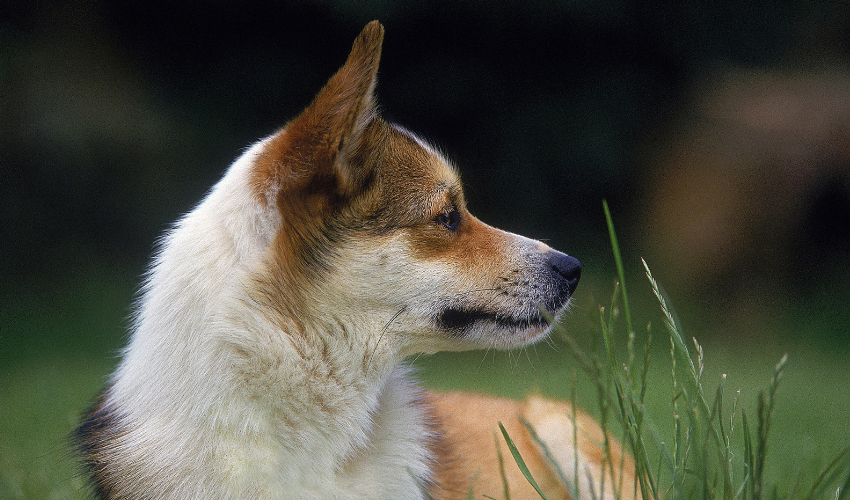If you’re looking for a dog breed that’s as unique as it is adorable, then the Norwegian Lundehund might just be the perfect fit for you. This spitz breed, which originated in Norway, is known for its incredible flexibility and unusual features, making it an interesting choice for any dog lover.
In this article, we’ll dive into the history, characteristics, and care requirements of the Norwegian Lundehund. From their hunting origins to their distinctive six-toed feet, you’ll learn everything you need to know about this fascinating breed.
History of the Norwegian Lundehund:
The Norwegian Lundehund, also known as the Puffin Dog, was originally bred for hunting puffins on the rugged cliffs of Norway’s western coast. This unique breed was able to navigate the treacherous terrain and squeeze into narrow crevices to capture their prey.
In the early 20th century, the Norwegian Lundehund nearly went extinct due to a combination of hunting regulations and distemper outbreaks. Thanks to dedicated breeders, however, the breed was saved and is now recognized by the American Kennel Club and other organizations worldwide.
Characteristics of the Norwegian Lundehund:

The Norwegian Lundehund is a small to medium-sized spitz breed with a distinctive appearance. Here are some of the unique characteristics of this breed:
- Six Toes: Unlike most dogs, the Norwegian Lundehund has six toes on each foot, which help them grip onto rocks and navigate steep terrain.
- Flexible Joints: The Norwegian Lundehund has incredibly flexible joints, which allow them to bend their body in ways that other dogs can’t. They can even touch their head to their back!
- Alert and Intelligent: This breed is known for being highly alert and intelligent, making them excellent watchdogs and quick learners.
- Double Coat: The Norwegian Lundehund has a thick, double coat that provides insulation and protection from the cold.
Training and Exercise for the Norwegian Lundehund:
The Norwegian Lundehund is an active breed that requires plenty of exercise and mental stimulation. They enjoy playing and running outdoors, but they also require regular training and socialization to become well-behaved companions.
Training should be positive and reward-based, as this breed can be sensitive to harsh correction. They respond well to food rewards and praise, and training sessions should be kept short and engaging.
Health and Nutrition for the Norwegian Lundehund:

The Norwegian Lundehund is generally a healthy breed, but like all dogs, they are prone to certain health conditions. These may include:
- Intestinal Issues: Due to their history as a hunting dog, the Norwegian Lundehund can have a sensitive digestive system.
- Eye and Ear Problems: This breed can be prone to eye and ear infections, so regular cleaning and check-ups are important.
- Joint Issues: The Norwegian Lundehund’s unique joint flexibility can also make them prone to joint problems.
A high-quality diet that meets the nutritional needs of the Norwegian Lundehund is essential for their health and well-being. Consult with your veterinarian to determine the best diet for your dog based on their age, activity level, and health status.
Grooming the Norwegian Lundehund:
The Norwegian Lundehund has a thick, double coat that sheds moderately throughout the year. Regular grooming is necessary to keep their coat healthy and free of tangles and mats.
Brushing their coat weekly with a slicker brush and comb can help remove loose hair and prevent mats from forming. During shedding season, which typically occurs twice a year, more frequent brushing may be necessary.
It’s also important to regularly trim their nails, clean their ears, and brush their teeth to maintain their overall health and hygiene.
Frequently Asked Questions About the Norwegian Lundehund:
Are Norwegian Lundehunds good family dogs?
Yes, Norwegian Lundehunds can make great family dogs. They are loyal, playful, and protective of their family members.
Are Norwegian Lundehunds good with children?
Yes, Norwegian Lundehunds can be good with children if they are properly socialized and trained from a young age. However, due to their high energy level, they may not be the best choice for families with very young children.
How much exercise does a Norwegian Lundehund need?
The Norwegian Lundehund is an active breed that requires daily exercise and mental stimulation. They enjoy running, playing, and exploring outdoors and should have at least 30-60 minutes of exercise per day.
Are Norwegian Lundehunds easy to train?
Norwegian Lundehunds are generally intelligent and eager to please, but they can be stubborn and independent at times. Positive reinforcement training methods are recommended, and patience and consistency are key.
What health problems are Norwegian Lundehunds prone to?
Norwegian Lundehunds can be prone to intestinal issues, eye and ear problems, and joint problems due to their unique physical characteristics. Regular check-ups with a veterinarian are important to monitor their health and address any potential issues early on.
Conclusion:
The Norwegian Lundehund is a fascinating and unique breed that’s sure to capture the hearts of dog lovers. From their hunting origins to their flexible joints and six-toed feet, this breed is a true marvel of nature.
If you’re considering adding a Norwegian Lundehund to your family, make sure you’re prepared for their exercise and grooming needs and are willing to provide them with the love and attention they deserve. With proper care and training, the Norwegian Lundehund can be a loyal and loving companion for many years to come.





















